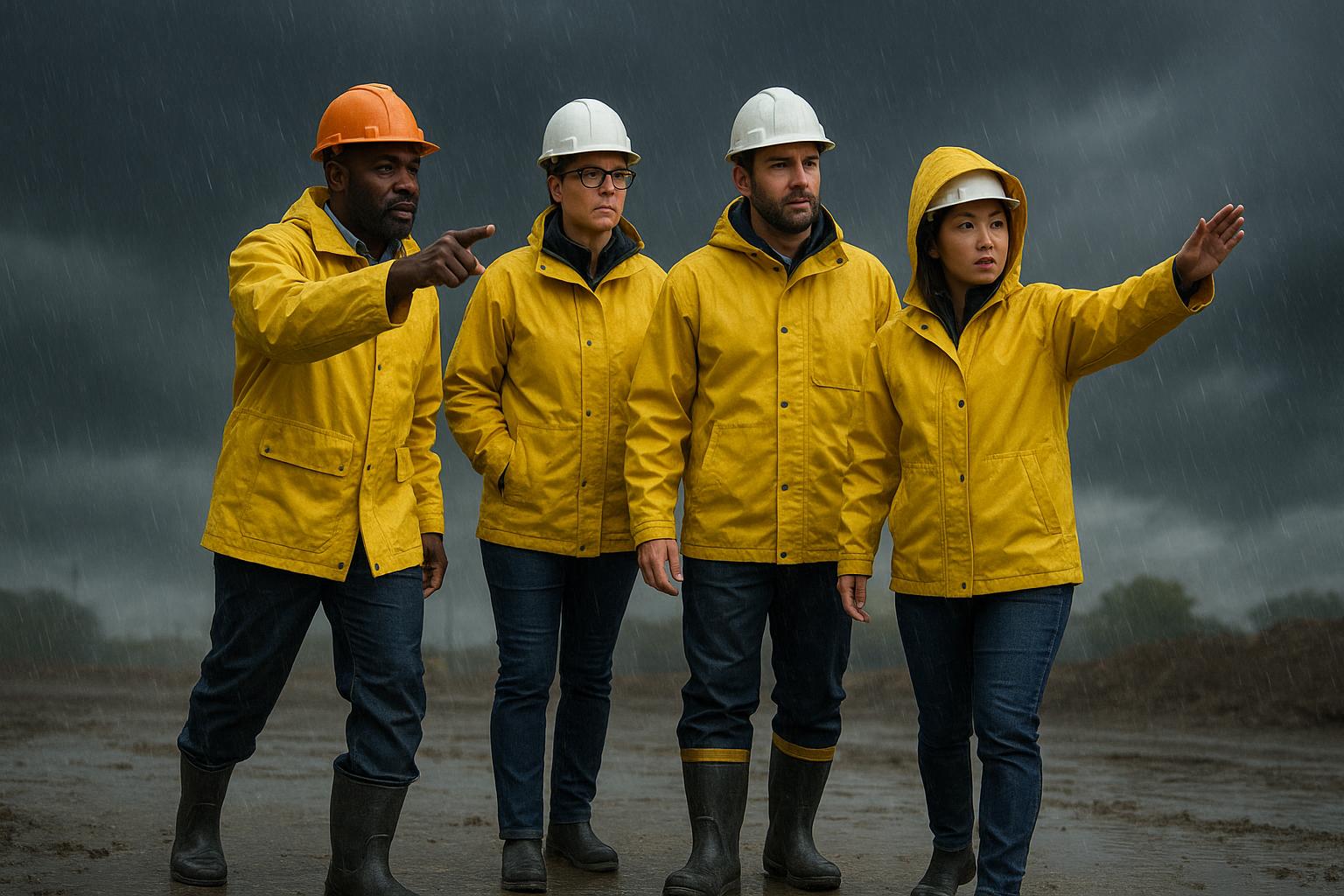Working in high-temperature environments poses serious risks to workers, including heat exhaustion, heat stroke, dehydration, and fatigue. While hydration and breaks help prevent heat-related illnesses, one of the most effective safety strategies is implementing the heat stress buddy system.
When workers are alone in extreme heat, the risk of unnoticed heat stress increases, leading to delayed response times in medical emergencies. Having a partner to monitor for early signs of heat stress, assist in emergencies, and seek help when needed can be life-saving.
Today, we’ll discuss the importance of using the buddy system, how to implement it effectively, and why monitoring each other for heat-related illnesses can prevent severe medical emergencies.
Why Is the Buddy System Critical in Extreme Heat?
Heat stress symptoms can escalate quickly, and many workers may not recognize they are in danger until it’s too late. Disorientation, dizziness, and confusion—all common signs of heat stress—can impair a worker’s ability to call for help.
A buddy system ensures that:
- Workers watch for early signs of heat-related illnesses in each other.
- Immediate assistance is available if someone becomes ill.
- Heat stress symptoms do not go unnoticed, preventing severe complications.
- Help can be called promptly, reducing response time for medical emergencies.
Without a buddy system, workers may collapse from heat stroke or suffer severe dehydration without assistance, leading to fatal consequences.
Prevention and Elimination Tactics
How to Implement the Buddy System in Hot Work Environments
The buddy system should be structured and consistently enforced in all workplaces where extreme heat is a risk. Here’s how to implement it effectively:
✅ Assign Partners for Every Worker
- Workers should pair up in teams of two—preferably alternating between experienced and newer employees.
- Partners should work within sight of each other at all times.
✅ Establish Check-In Procedures
- Buddies should check in with each other every 15–20 minutes, especially during peak heat hours.
- Designate hydration checkpoints where partners verify each other’s well-being.
✅ Recognize and Respond to Heat Stress Symptoms in Your Partner
- Watch for dizziness, excessive sweating, confusion, or loss of coordination.
- If a partner appears fatigued, overheated, or unwell, stop work immediately and move to a cool area.
- If severe symptoms arise, call emergency services without hesitation.
✅ Train Workers on How to Call for Help
- Establish a clear communication plan for heat emergencies.
- Provide radios or phones in isolated job sites so workers can call for assistance.
- Ensure all workers know emergency response protocols.
By following these steps, workplaces can reduce the risk of heat-related emergencies and create a safer work environment.
Importance of the Buddy System
- 40% of heat-related fatalities occur when workers are alone, with no one to assist them. (Source: National Institute for Occupational Safety and Health – NIOSH, 2023)
- Workers exposed to extreme heat are 2.5 times more likely to experience fatigue-related errors. (Source: Bureau of Labor Statistics, 2023)
- Heat stress symptoms can escalate to heat stroke in under 30 minutes if untreated, making early detection critical. (Source: Centers for Disease Control and Prevention – CDC, 2023)
- Employers who implement the buddy system see a 35% reduction in heat-related medical emergencies. (Source: Occupational Safety and Health Administration – OSHA, 2023)
- Checking in with a partner every 15 minutes reduces the risk of heat exhaustion by 50%. (Source: American Journal of Industrial Medicine, 2022)
These statistics demonstrate the life-saving benefits of using the buddy system in high-heat environments.
How You Can Use This Information in Your Workplace
1. Pair Up – Never Work Alone in Extreme Heat
- Always have a designated buddy during hot work conditions.
- Check on each other regularly to ensure safety.
2. Learn the Warning Signs of Heat Stress
- Recognize heat exhaustion symptoms like dizziness, confusion, and extreme sweating.
- Know when to call for medical assistance if symptoms worsen.
3. Follow Proper Heat Safety Protocols
- Take hydration and shade breaks every 15–20 minutes.
- Use cooling stations, misting fans, and shade structures whenever possible.
4. Encourage Team Communication
- Speak up if you notice a partner struggling with heat symptoms.
- Report any heat stress concerns to supervisors immediately.
5. Support a Heat Safety Culture
- Participate in heat safety training and emergency drills.
- Promote a workplace environment where workers prioritize looking out for each other.
By implementing these steps, workers and employers can significantly reduce heat stress incidents and improve overall workplace safety.
Extreme heat can be deadly, but the buddy system is one of the most effective ways to prevent heat-related emergencies. Monitoring each other for signs of heat stress, taking frequent breaks, and knowing when to call for help can save lives.
Take action today—pair up with a buddy, stay aware of heat stress symptoms, and advocate for a workplace culture that prioritizes heat safety. A well-prepared workforce is a safer, healthier, and more productive workforce!



